Dujmovits returns to Mount Everest
Two weeks have passed since Ralf Dujmovits has decided to abandon his winter expedition on Nanga Parbat due to the strong risk of icefall. Two weeks to reflect on his experiences in Pakistan and also to look ahead. I call the 52-year-old German climber at home, in the town of Buehl at the foot of the Black Forest.
Ralf, what does German winter feel like, compared with winter in Pakistan, in particular on Nanga Parbat?
I stood at Frankfurt airport and then at the stations in Mannheim and Karlsruhe wearing a short-sleeved shirt, all around me people wrapped up in winter clothes. I had to get used again to the warm temperatures. We have a very warm winter in Germany, a real contrast to what we had in Pakistan. Whatever, I feel that I`m arriving also mentally and I am enjoying the warmth again.
![]() read more
read more
Dujmovits: Solo on Nanga Parbat – above 5000 meters
Fast and alone. That is Ralf Dujmovits’ tactics for his winter ascent of Nanga Parbat. The first German, who climbed all fourteen 8000ers, has chosen an unusual way of acclimatizing: The 52-year-old climbed Aconcagua, the highest mountain of South America, and spent two nights at the 6962-meter-high summit. Ralf’s wife Gerlinde Kaltenbrunner will be missing from the expedition to Nanga Parbat. The 43-year-old female climber from Austria must cure her joints which are overstressed by training. Today Ralf travelled to Pakistan. During his brief stopover at home in the German town of Buehl I spoke to him:
Ralf, why did you choose Nanga Parbat?
Nanga Parbat is for me – and has been also for Gerlinde for a long time – the most beautiful 8000er. Whenever we were asked after having finished the fourteen 8000ers, which of them we might try again, we independently answered: Nanga Parbat .
And why in winter?
![]() read more
read more
Andy Holzer: “At 7500 meters everyone is disabled”
The blind can see, just in a different way. This is demonstrated by the Austrian Andy Holzer. The 47-year-old from Lienz in East Tyrol has been blind since birth. But that does not prevent him from rock climbing, ski touring or even mountaineering in the Himalayas. 16 August 1975 was a special day in Andy’s life: As a nine-year-old boy he was allowed for the first time to climb a rocky mountain together with his parents. After he had dragged himself for hours through the debris he turned to rock climbing and suddenly he regarded his father as climbing too slow. His mother couldn’t follow them. “I felt like someone had freed me from chains”, Andy recalled, as we recently met during the International Mountain Summit in Brixen.
Andy, the first question is probably always the same. How do you manage to climb a rock face without being able to see anything?
I don’t climb without seeing it. That would not work.
Please explain what you mean!
![]() read more
read more
Alexander Polli: “I’m extremely afraid of dying”
The dream of flying like a bird is as old as humanity itself. Until the moment of deploying the parachute a basejump from a cliff seems to get close to this dream, jumping with a wingsuit from a mountain maybe even closer. But there’s a catch: Mostly a mistake means death. In 2013 alone more than twenty jumpers died, among them the Canadian Mario Richard and the Briton Mark Sutton. The 47-year-old Richard was the husband of US climber Steph Davis. The 42-year-old Sutton had served as a stunt double of James Bond during the opening ceremony of the Olympic Games 2012 in London when he had skydived out of a helicopter into the Olympic Stadium. Both died in August during wingsuit flights, Richard in Italy, Sutton in Switzerland.
During the International Mountain Summit in Brixen I talked to Alexander Polli. The 28-year-old Norwegian, who is living mostly in Italy, is one of the most experienced wingsuit flyers of the world. This year he caused a furore by flying through a rockhole in Spain with about 250 km/h.
![]() read more
read more
Messner: “That was typically Ueli Steck”
Actually I wanted to ask Reinhold Messner these questions during the International Mountain Summit in Brixen. But a planned press conference was cancelled and the 69-year-old left the venue in no time at all, for whatever reason. But I had not to wait a long time for the South Tyrolean. He came to me – in a way. Last weekend the most famous mountaineer of the world gave a lecture in my home town of Cologne. Before the event started Messner answered my questions.
Reinhold Messner, recently you visited Pakistan, a few months after terrorists had shot eleven climbers at the Diamir basecamp on Nanga Parbat. Describe the atmosphere down there!
The mountain has not changed, but the connections are much worse than I thought. The terrorists were contract killers close to the Taliban, paid to carry out a bloodbath. Originally they had a different target. A great festival with polo games etc. was cancelled, probably because the organizers were worried that something might happen. Then the hit squad turned to Nanga Parbat. After the assault the killers took their money and disappeared. Some of them have been arrested, but nobody knows who has been the principal. On the one hand the terrorists wanted to hit the north of Pakistan, the local tourism, which collapsed by 90 percent. But they also wanted to hit the western world. Fortunately there have not been more victims. There were more than 60 people on Nanga Parbat, but most of them were at the high camps then.
![]() read more
read more
Destivelle: “Crazy what’s happening on Everest”
She looks younger than she really is (53 years) and her eyes twinkle when she is talking about climbing. 20 years ago Catherine Destivelle of France was a star of the climbing scene: Inter alia she soloed the classical north faces of Eiger, Matterhorn and Grand Jorasses, all of them in winter. She free-climbed the more than 6000-meter-high Nameless Tower in the Karakoram. (If you want to get an impression of her style of climbing, watch the amazing video below!) After the birth of her son Victor in 1997 she scaled down her climbing activities. I talked to Catherine on a hike during the International Mountain Summit (IMS) in Brixen in South Tyrol.
Catherine, are you still climbing?
Yes, less, but I’m still climbing. I like it. When I have time or holiday, I do it several times a week.
When you did your great climbs, in the 1980s and beginning of the 90s, you were a pioneer of women climbing. What has changed since then?
I think it’s a normal evolution. Women climbers of today are better than in our times, because they are training since their youth. Climbing has become a real sport. In my day it just had started to be a sport, but wasn’t really.
![]() read more
read more
Goettler: Relations with Sherpas will remain well
Many are familiar with the view of Makalu, without being aware of it. On pictures taken from the summit of Mount Everest in direction of the Southeast Ridge you see in the background the shapely fifth highest mountain on earth. Just a few kilometres linear distance are lying between the two 8000ers, but actually they are worlds apart. This spring the headlines concerning Everest were overturning: first the brawl in Camp 2, then the 60-year-anniversary of the first ascent. Because of this I lost sight of an expedition of four German and a Swiss climber to Makalu.
Siegrist left expedition
David Göttler, Michael Waerthl, Hans Mitterer, Daniel Bartsch and Stephan Siegrist wanted to climb the mountain in Alpine style via the challenging west pillar. Siegrist had to cancel the expedition because he got severe headaches and vision disorders, possibly due to a skull fracture that he had a few years earlier. The other four abandoned their original plan and ascended via the normal route. Waerthl returned because of icy fingers about 200 metres below the summit. The other three climbers reached the highest point at 8485 metres.
![]() read more
read more
Siegrist: Eiger North Face is largely exhausted
Hinterstoisser Traverse, Swallows Nest, Death Bivouac. When I was a boy of ten I sat on holidays in Grindelwald using my binoculars to study the Eiger North Face. I had devoured “The White Spider”, Heinrich Harrer’s well-known book. I was so fascinated that I got up at night and looked on the route for bivouac lights. On this Wednesday 75 years ago the Eiger North Face was climbed successfully for the first time. The four pioneers of 1938 are dead. The last of the German-Austrian team who died was Harrer in 2006.
I ring Stephan Siegrist up. The 40-year-old mountaineer from Switzerland has a special relationship to the Eiger North Face. He has already climbed the wall 29 times, opened two new extremely hard routes together with his compatriot Ueli Steck – and climbed on the trails of the quartet of 1938.
Stephan, 75 years ago the Germans Anderl Heckmair and Ludwig Vörg and the two Austrians Heinrich Harrer and Fritz Kasparek climbed the Eiger North Wall for the first time. What do think about their performance?
For me it’s still one of the greatest things that have ever been made in the Alps. You have to imagine that the strain was very great. They knew that many climbers before had died in the wall. And climbing it with the material of these former days was truly heroic.
![]() read more
read more
Bonington: The pioneers have gone elsewhere
When Everest was climbed first in 1953 Chris Bonington was a young English mountaineer of 17 years. Later he did historic climbs like the first ascents of Annapurna II in 1960, of the Central Pillar of Freney on the south side of Mont Blanc in 1961 and of the 7285-meter-high Ogre in the Karakoram together with Doug Scott in 1977 (the second ascent followed only in 2001). But Bonington also proved to be a great expedition leader. In 1970 he led the successful expedition to the South Face of Annapurna, in 1975 the expedition to Mount Everest, during which Doug Scott and Dougal Haston climbed the Southwest Face first. Bonington himself reached the summit of Everest in 1985 as a member of a Norwegian expedition. He was knighted by the Queen in 1996 for his services to the sport. I met the 78-year-old climber last week at the diamond jubilee celebration of the first ascent of Mount Everest in the Royal Geographical Society in London and asked him – of course – about his thoughts on Everest.
Sir Chris Bonington, 60 years after the first ascent of Mount Everest, how do you feel about these pioneers?
I’m a great believer in the heritage of our sport, looking back, enjoying and learning from what our predecessors have done. In a way that first ascent of the highest point on earth is one of the very, very great occasions. I think it’s story. How they succeeded and worked together, it was a superb team effort. It’s something very special.
![]() read more
read more
Kammerlander: Sherpa attack ‚below the belt’
The phone rings. At the other end: „Hans Kammerlander!” I had asked the South Tyrolean extreme mountaineer by email for his thoughts on the 60-year-anniversary of the first ascent of Everest. Hans prefered to answer directly. The 56-year-old has climbed twelve of the fourteen 8000ers, all without bottled oxygen, seven of them together with Reinhold Messner. With him Kammerlander succeeded in 1984 the first (and till this day not repeated) double traverse on 8000ers, in Alpine style, i.e. without the help of Sherpas, without high camps, fixed ropes and oxygen mask. In the Karakoram in Pakistan Messner and Kammerlander summited Gasherbrum I, descended on another route to a col, from where they directly climbed up to the top of Gasherbrum II and downhill via another route. After eight days, they returned to basecamp. It was a milestone of climbing on the 8000ers.
In the morning hours of 24th May 1996 Hans reached the summit of Mount Everest, after climbing up from the Tibetan north side of the mountain. He was alone then. Afterwards he skied down, only in a few passages without snow he had to put off his skies. We talked not only about this day but also about the recent events at the highest mountain on earth.
Hans, what kind of mountain is Everest for you today?
It has always been important for me as a high altitude climber. For years I’ve dreamed of him because I have had two hobbies since I was a child: climbing and skiing. I had the idea to combine both on the highest mountain in the world.
![]() read more
read more
Messner: Traffic light at the Hillary Step
Ask the first man or woman you meet on any street in Europe after the name of a famous mountaineer and you will very likely get the response: „Reinhold Messner“. Although he did his pioneering ascents in the Himalayas andKarakorum more than a quarter of a century ago, the 68-year-old South Tyrolean is still very present in public awareness. Messner has been contributing his part by writing book after book, givings lectures and interviews – and polarizing with his statements. In my interview with him on the occasion of the upcoming 60th anniversary of the first ascent of Everest Reinhold Messner again had clear positions. Don’t wonder why I didn’t ask him about the recent incident on Everest. We met before.
Reinhold Messner, we first look back on the 29th May 1953, when the New Zealander Edmund Hillary and Sherpa Tenzing Norgay became the first men to reach the summit of Mount Everest. Would you say that this was an outstanding achievement of two courageous mountaineers or rather a team performance?
It was primarily a British team performance because the British have brought the know-how and the money and made huge preparatory works.
![]() read more
read more
Urubko: Much depends on weather and luck
Not only formerly French actor Gerard Depardieu has become a Russian, but also Denis Urubko. The 39 years old climber wrote me that he had left Kazakhstan and had now a passport of Russia. This spring Denis – together with his new countryman Alexei Bolotov – wants to climb Mount Everest on a new route (look here) via the southwest face. Urubko has already climbed all fourteen 8000ers without supplementary oxygen. Together with his friend Simone Moro from Italy Denis succeeded the first winter ascents of Makalu(2009) and Gasherbrum II (2011). In 2010 Denis and Kazakh Boris Dedeshko were awarded with the Piolet d’Or, the ‘Oscar’ of mountaineering, for their new route via the south face of Cho Oyu. I asked Urubko about his new plan on Everest.
![]() read more
read more
Pasaban: Everest looks like Disney World
In sports the second is often seen as the first looser. On May 17,2010 Edurne Pasaban from Spain finished the climbing of all fourteen 8000ers. But up to now it’s not clear whether she was the first or second woman who achieved this. Oh Eun-Sun completed the 8000ers three weeks earlier, but it remains disputed, whether the Korean really reached the summit of Kangchenjunga. When I talked to Edurne at the trade fair ISPO in Munich, I felt that the 39 years old climber is in harmony with the world around her, with the mountains and herself:
Edurne, you completed the fourteen 8000ers in 2010. Have you been in the Himalayas since then?
I came back to Everest in 2011. Everest was my first 8000er in 2001, I used (supplementary) oxygen for the summit. So after I had finished all 8000ers I wanted to try Everest without oxygen. But we didn’t make the summit.
![]() read more
read more
Brice: „Of course I will return this year“
In spring 2012 Russell Brice put the brakes on. The probably most experienced operator of commercial expeditions to Mount Everest cancelled his expedition, because he considered the conditions in the Khumbu icefall and on the Lhotse face as too hazardous. „The danger is certainly past my parameters“, Brice said. Russell has been leading expeditions to the Himalayas since 1974. For this spring his agency Himalayan Experience offers Everest South Side again. I asked the 60 years old New Zealander per email:
![]() read more
read more



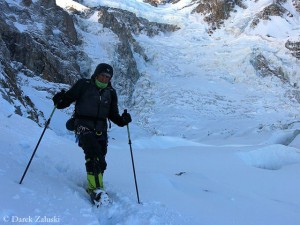




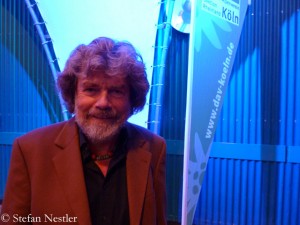
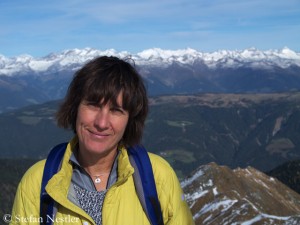

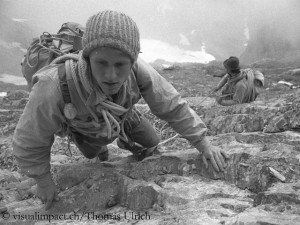
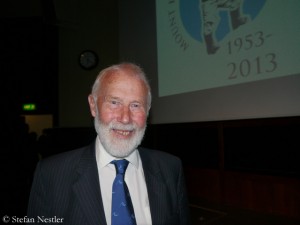
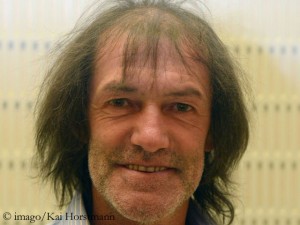
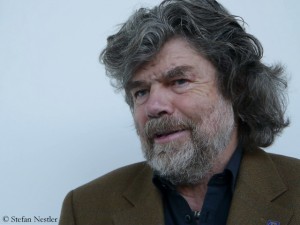
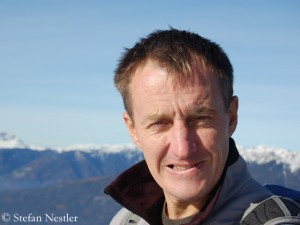







Feedback